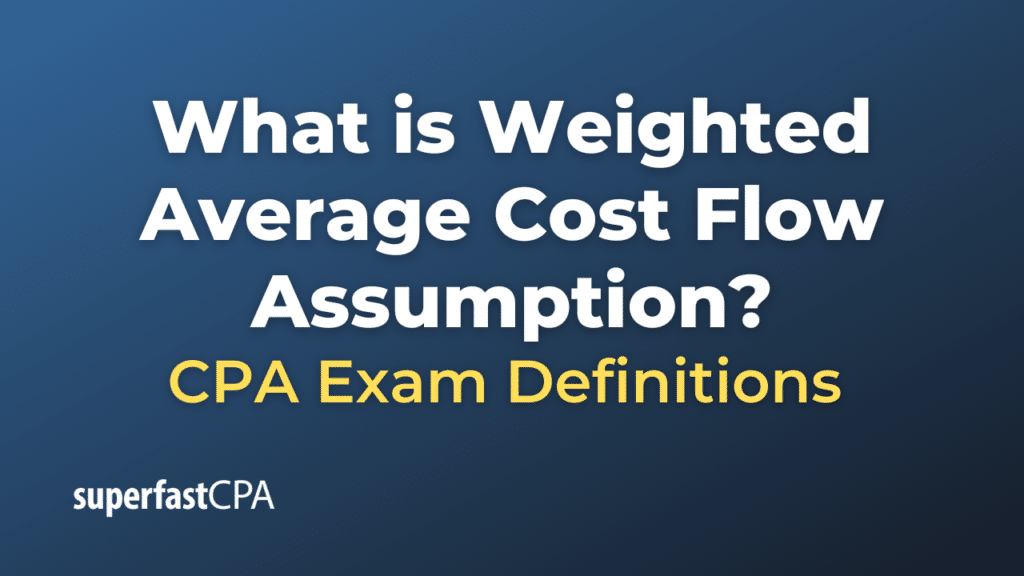Weighted Average Cost Flow Assumption
The Weighted Average Cost Flow Assumption is an inventory valuation method that calculates the average cost of all inventory items to determine the cost of goods sold (COGS) and the ending inventory. This method assumes that all inventory items are identical and interchangeable, regardless of when they were purchased or produced. It is one of several inventory costing methods, along with others like First-In-First-Out (FIFO) and Last-In-First-Out (LIFO).
How to Calculate Using Weighted Average Cost Flow Assumption:
- Calculate the Weighted Average Cost: The average cost per unit is determined by dividing the total cost of items available for sale by the total number of units available for sale.
Weighted Average Cost per Unit = Total Cost of Inventory / Total Units in Inventory - Calculate Cost of Goods Sold (COGS): Multiply the weighted average cost per unit by the number of units sold.
COGS = Weighted Average Cost per Unit × Units Sold - Calculate Ending Inventory: Multiply the weighted average cost per unit by the number of units remaining in inventory.
Ending Inventory = Weighted Average Cost per Unit × Units Remaining in Inventory
Example of Weighted Average Cost Flow Assumption
Let’s consider a fictional example of a small bookstore that sells a particular novel. The bookstore had the following transactions related to this novel during a month:
Transactions:
- Beginning Inventory: 100 copies at $10 each (Total Cost: $1,000)
- First Purchase: 200 copies at $11 each (Total Cost: $2,200)
- Second Purchase: 50 copies at $12 each (Total Cost: $600)
Step 1: Calculate the Total Units and Total Cost
- Total Units: 100 (Beginning) + 200 (First Purchase) + 50 (Second Purchase) = 350
- Total Cost: $1,000 (Beginning) + $2,200 (First Purchase) + $600 (Second Purchase) = $3,800
Step 2: Calculate the Weighted Average Cost per Unit
Weighted Average Cost per Unit = $3,800 / 350 = $10.8571 = $10.86
Step 3: Sales and Inventory Valuation
Let’s assume that during the month, the bookstore sold 220 copies of the novel.
- Cost of Goods Sold (COGS): 220 copies sold x $10.86 per copy = $2,389.20
- Ending Inventory: (350 total copies – 220 copies sold) x $10.86 per copy = 130 x $10.86 = $1,411.80
Summary:
- Total Cost of Goods Sold (COGS): $2,389.20
- Value of Ending Inventory: $1,411.80
The Weighted Average Cost Flow Assumption allowed us to smooth out the price fluctuations across our different purchases, providing us with a single average cost figure to use for COGS and ending inventory valuation.
This method is particularly useful when individual items are not easily distinguishable from one another, or when prices fluctuate frequently. It gives an averaged, smoothed cost that can be easily applied for accounting and decision-making purposes.













